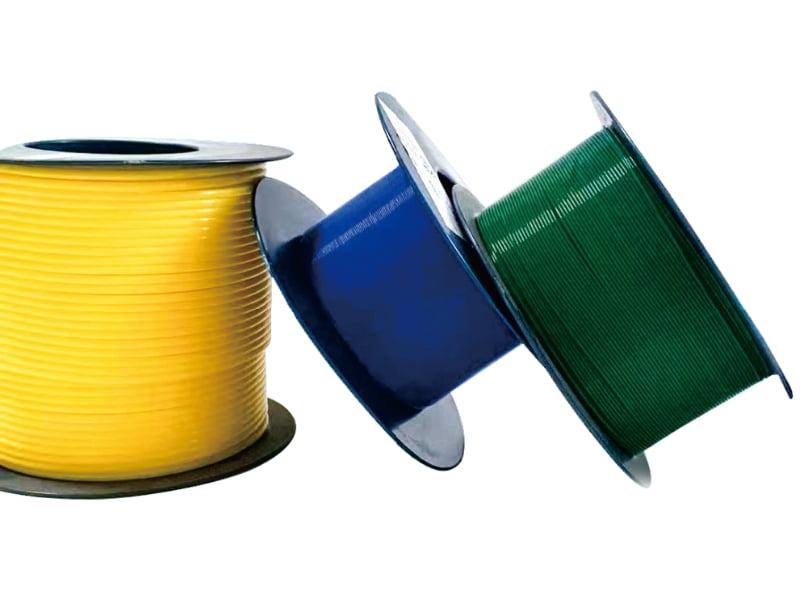PTFE TUBE: Characteristics, Applications, and Maintenance
What is PTFE TUBE?
Polytetrafluoroethylene (PTFE) tube is a specialized fluoropolymer tubing known for its exceptional chemical resistance and thermal stability. PTFE, first developed by DuPont in 1938 under the brand name Teflon®, has become an essential material in industrial and laboratory applications where extreme conditions are encountered. The tubing is manufactured through an extrusion process that creates a seamless, non-porous structure with consistent wall thickness ranging from 0.1mm to 10mm depending on application requirements.

Key Characteristics of PTFE TUBE
Chemical Resistance: PTFE Tubing demonstrates unparalleled chemical inertness, resisting virtually all industrial chemicals including strong acids (e.g., 98% sulfuric acid), bases (e.g., concentrated sodium hydroxide), and solvents (e.g., acetone, toluene). Testing shows less than 1% weight change after 30 days immersion in concentrated hydrochloric acid at 25°C.
Temperature Performance: PTFE maintains structural integrity across an extreme temperature range from -200°C to +260°C continuously, with short-term exposure possible up to 300°C. The material shows no significant degradation after 500 hours at 250°C in laboratory aging tests.
Electrical Properties: With a dielectric strength of 19.7 kV/mm and volume resistivity exceeding 1018 Ω·cm, PTFE tubing serves as excellent electrical insulation. The dielectric constant remains stable at 2.1 across frequencies from 50Hz to 10GHz.
Surface Characteristics: PTFE's extremely low coefficient of friction (0.05-0.10) and non-stick properties result in minimal flow resistance, with pressure drop measurements showing 15-20% reduction compared to equivalent stainless steel tubing in fluid transfer applications.
Mechanical Properties: While flexible, PTFE tubing maintains tensile strength between 20-35 MPa and elongation at break of 300-500%. The material's creep resistance is superior to other thermoplastics, with less than 2% deformation under constant load at room temperature after 1000 hours.
Applications of PTFE Tube
Chemical Processing: Used for transferring aggressive chemicals in semiconductor manufacturing (HF, aqua regia), pharmaceutical production, and petrochemical applications where metal tubing would corrode. PTFE-lined pipes can handle pressures up to 16 bar at 20°C.
Medical Devices: Biocompatible grades (USP Class VI compliant) serve as catheter liners, endoscopic tubing, and fluid transfer lines in diagnostic equipment. The material's 0.2µm surface roughness minimizes bacterial adhesion.
Aerospace: Lightweight PTFE tubing (density 2.15-2.20 g/cm³) is used in fuel systems, hydraulic lines, and wire insulation in aircraft, meeting standards like AMS 3657 for -55°C to 260°C operation.
Electrical Engineering: High-voltage cable insulation, thermocouple sheaths, and coaxial cable dielectric layers benefit from PTFE's 500V/mil breakdown voltage and stable dielectric properties across temperature variations.
Food Processing: FDA-compliant PTFE tubing transfers viscous food products (chocolate, syrups) at temperatures up to 204°C without contamination risk, with surface release properties reducing product waste by 30-40% compared to metal systems.
Laboratory Equipment: Used in HPLC systems, peristaltic pumps, and gas chromatography where purity is critical. Extractables testing shows <1ppm total organic carbon leaching after prolonged solvent exposure.
Maintenance and Care of PTFE Tubing
Cleaning Procedures: For routine maintenance:
Use ultrasonic cleaning with 1% Triton X-100 solution at 40-60°C for 10-15 minutes to remove particulate contamination
For organic residues, flush with reagent-grade isopropanol followed by deionized water
High-purity applications may require nitrogen purging at 2-3 bar for 30 minutes
Inspection Protocol:
Check for discoloration (yellowing indicates possible thermal degradation above 300°C)
Measure wall thickness with ultrasonic thickness gauge - replacement recommended if erosion exceeds 20% of original thickness
Conduct bubble point testing for porous applications - maintain >3.4 bar bubble point pressure for critical filtration
Storage Conditions:
Store in original packaging away from UV light (UV exposure causes 0.5%/year surface degradation)
Maintain ambient temperature below 40°C and relative humidity <60%
For coiled tubing, maintain minimum bend radius of 5× outer diameter to prevent cold flow deformation
Installation Best Practices:
Use PTFE-compatible fittings (stainless steel 316L or PFA) with 15-20% compression on ferrule designs
Allow 10-15% expansion margin for thermal cycling applications
For high-pressure applications (>10 bar), implement support spacing every 0.5-1 meter to prevent vibration-induced fatigue
Life Expectancy: Under standard conditions (20-25°C, pH 5-9), PTFE tubing typically achieves:
7-10 years for chemical transfer applications
5-7 years in medical device applications with sterilization cycles
3-5 years in high-temperature (>200°C) industrial processes




 English
English

